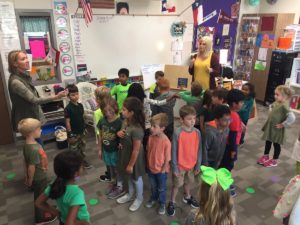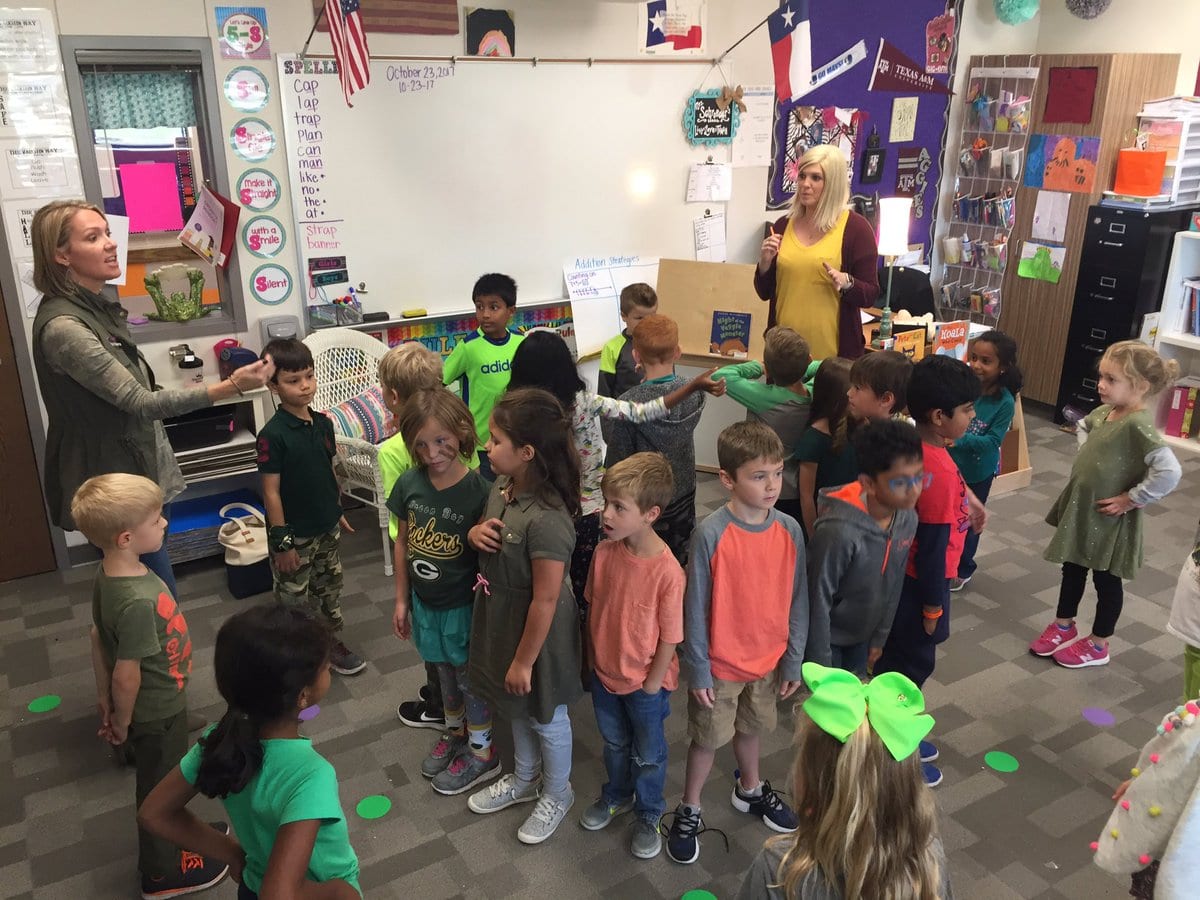Student Contributor: M. Caballero
 During this strategy, students form two different circles: half of the group stands in a circle facing outward while the other half forms a circle around them facing inward, rotating whenever the teacher cues. Students in either circle have quick, one on one exchanges with different students in a short amount of time, which is good for trading tips, examples and information.
During this strategy, students form two different circles: half of the group stands in a circle facing outward while the other half forms a circle around them facing inward, rotating whenever the teacher cues. Students in either circle have quick, one on one exchanges with different students in a short amount of time, which is good for trading tips, examples and information.
Inside-outside circle begins with the teacher splitting the class up in half, with one group forming a outside circle, and one the inside circle. The teacher then poses a question for students and gives them time (usually about 30 seconds) to think of a response. The students then share their responses with their partners, who are standing directly across from them. On the teachers signal, the outside circle moves one step to the left/right and discusses the same question with a new partner.
This is a great tool for allowing students to gain different ideas and perspectives of any given topic, as well as actively encouraging community building among students. A couple other benefits are that some students may find it safe or easier to enter into a discussion with another classmate rather than with the entire class. Also, there is no specific materials needed for this strategy, so it can be easily incorporated into lessons.
We have used this tool in Gus’ class, where we discussed our thoughts on certain prompts regarding classroom management with different classmates.
 The Inside-outside circle tool falls under the Supportive phase. This tool would be within this phase because it is a way to help students interact with one another individually to share their ideas and answers to a given question. Along with this, it helps build a sense of community among the students since they interact with different classmates throughout the activity. The theory that this falls under would be student-directed and the collaborative theory. The teacher is the one who gives the prompt/question and signals to the students when to rotate. On the other hand, the students are the ones guiding the conversation with one another, as well as building a community by collaborating with different classmates.
The Inside-outside circle tool falls under the Supportive phase. This tool would be within this phase because it is a way to help students interact with one another individually to share their ideas and answers to a given question. Along with this, it helps build a sense of community among the students since they interact with different classmates throughout the activity. The theory that this falls under would be student-directed and the collaborative theory. The teacher is the one who gives the prompt/question and signals to the students when to rotate. On the other hand, the students are the ones guiding the conversation with one another, as well as building a community by collaborating with different classmates.
More Information –
Tool Source: Theteachertoolkit.com


